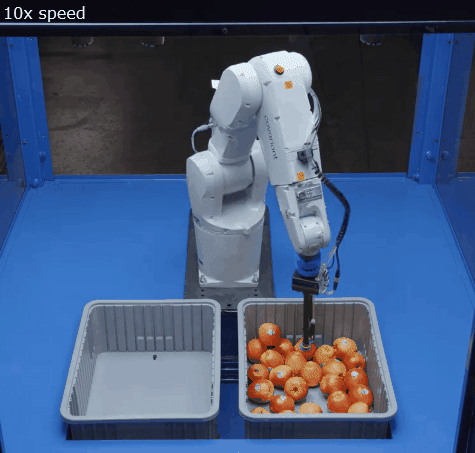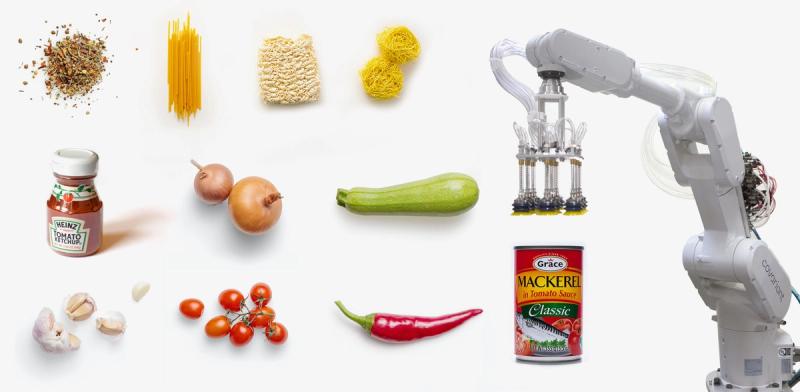From meals and snacks to pet treats and health & beauty, subscription services have grown immensely since companies like Blue Apron and Harry’s entered the US market in 2012. Now there seems to be a proliferation of subscription services for pretty much anything you can think of, be it oysters, cocktails, or hot sauce.
For subscription service companies and 3PLs providing them value-added kitting services, putting together millions of subscription boxes monthly can be quite labor-intensive. Given this, for a service shipping out millions of recipes per month, this labor cost can be a significant portion of the operational cost. Additionally, refrigerated work environments and other conditions can make it difficult to attract and retain workers.
Thanks to modern AI, robotic kitting can help reduce these labor costs and availability challenges by automating the kitting process.
What is robotic kitting?
A robotic kitting system uses AI to autonomously pick items from a supply tote and place them into an outgoing box, bin, or bag. With multiple robots operating simultaneously, robotic kitting can help reduce costs and alleviate labor dependency.
At the core of what makes robotic kitting possible is modern AI based on deep learning. AI Robotic platforms, like the Covariant Brain, enable robots to handle items that would be challenging, if not impossible, for traditional robots to pick — items ranging from individual cloves of garlic and tomatoes to small packets of spices and bottles of condiments.
Combining the power of AI with hardware designed specifically for kitting, subscription services companies can automate a very expensive and labor-intensive part of their operations.
Key aspects of a robotic kitting system
AI-powered picking
When it comes to robotic kitting for a subscription service like meal kits, it is imperative that a robot be able to handle a wide range of items. Meal kit ingredients can include produce (onion, garlic, tomatoes, etc.), small packets (spice blends, condiments, etc.), pouches, bottles, and boxes. And these items change for each recipe.
Modern AI is uniquely suited to enable robots to pick such a wide range of ever-changing items. For example, the Covariant Brain, the leading AI Robotics platform, is trained on millions of items from connected robots around the world. This enables robots in Covariant’s kitting system to pick and place virtually any item that might exist in a meal kit or other subscription offering, even if they have never been seen before.

System designed for throughput
Some meal kit subscription services ship out millions of recipes each month. All these recipes have to be picked, packed, and shipped on a very short timeline. This means that a robotic system must be designed to perform at high speeds, over sustained periods of time.
Having multiple robots operating simultaneously is key to achieving high throughput. The system must also be designed so that a single robot does not slow down upstream and downstream picking or packing.
A system like Covariant’s robotic kitting solution is designed to allow any number of robots to run in parallel. Furthermore, item buffering, automated replenishment, and takeaway conveyance ensure maximum throughput with no interruption on the kitting line.

Integrated into existing operations
A robotic kitting system should be able to fit into your current floorplan without much modification to your upstream and downstream processes. For example, while the picking is automated by robots, you might still have workers doing the packing or bringing replenishment totes. The system should be designed so the experience for them remains largely unchanged.
Robotic Kitting: A more cost-effective operational strategy
With the high labor needs of running a kitting operation, like a meal kit subscription service, robotic kitting helps reduce operational costs while reducing labor dependency. With out-of-the-box autonomous performance, automation powered by AI Robotics is the smart investment for your kitting operations.
Cover photo credit: Matt Popovich, Hannah Mn, Mockup Graphics, and Gabre Cameron, all on Unsplash
